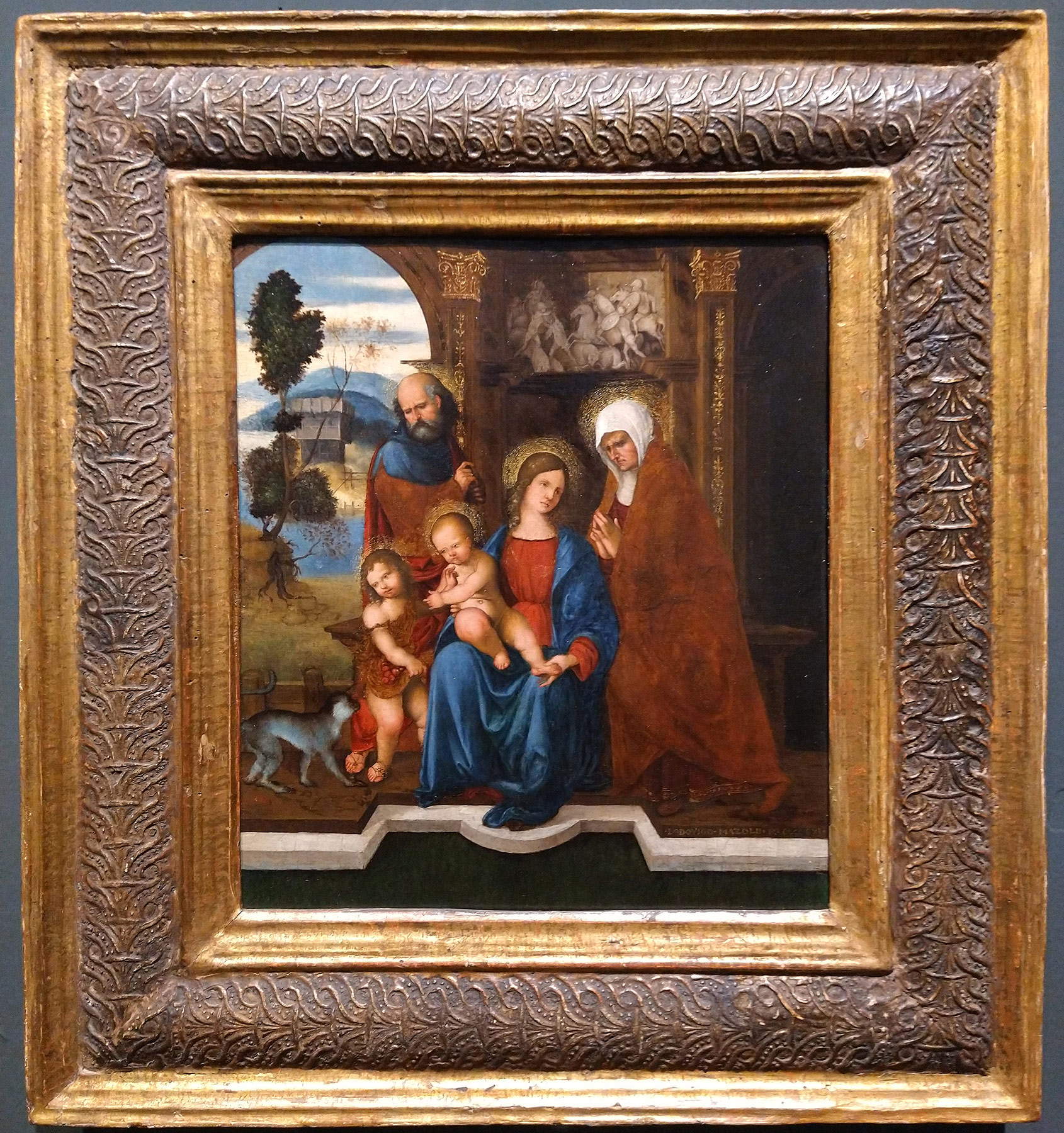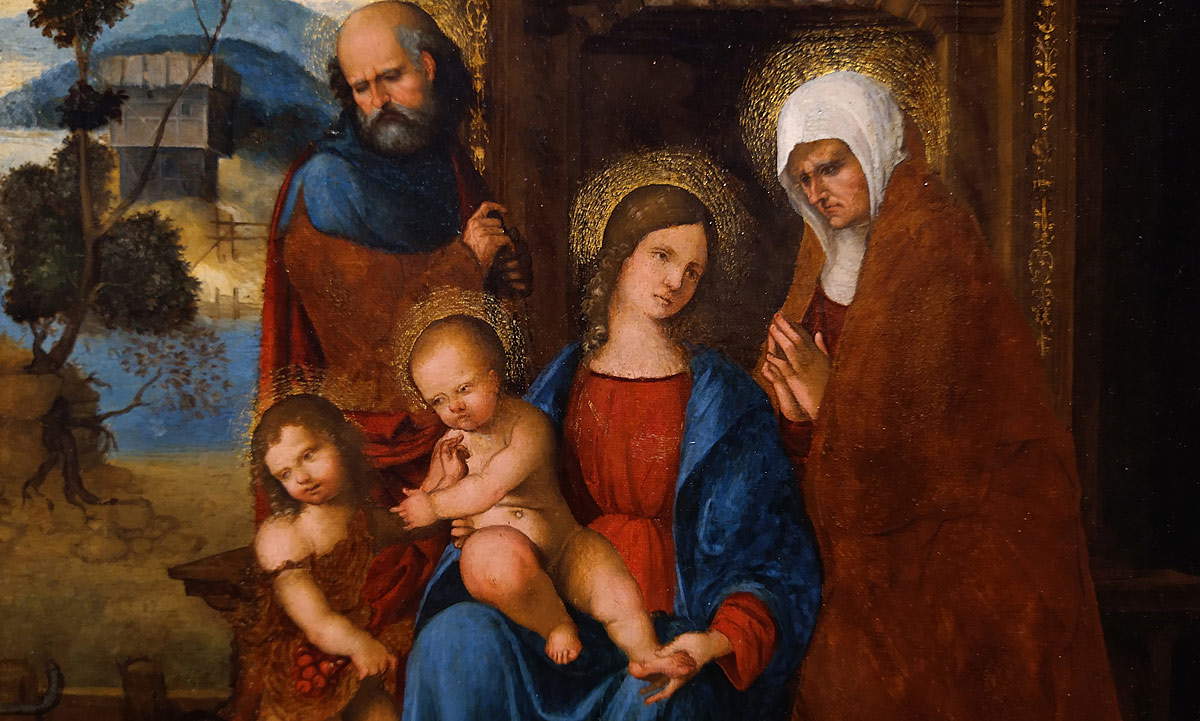For Giovanni Morelli, Ludovico Mazzolino was “der Glühwurm unter den Malern,” as he called him in his Kunstkritische Studien über italienische Malerei: the “firefly of painters.” The reason why is quickly said: because of his “wonderfully brilliant” colors, which made him one of the most sought-after painters by Roman collectors in the seventeenth century, a period when a large proportion of his paintings, after the Devolution of Ferrara, the city of which Mazzolino was a native, poured into the capital of the Papal States. He himself, while alive, worked mainly for private patrons, producing small-format paintings intended for the intimate devotion of his clientele. His patrons, just to name one, included Lucrezia Borgia.
Mazzolino was a Ferrarese who had quenched his thirst at the fountain of the Cosmè Turas, the Ercole de’ Roberti, and the Lorenzo Costa, until he arrived at a very peculiar stylistic figure, with marked traits of originality, which makes him well recognizable: he was not an innovator, certainly, but he was certainly an artist with admirable narrative skills, luminous, surprising and prone to unexpected and bizarre intonations, like all the great Ferrara painters. In short: “a restless and eccentric talent,” as Silla Zamboni called him in the first monograph dedicated to him.
It has been said that Mazzolino worked mainly for particular clientele, and indeed he is also famous because he was an extremely rare painter to see in large public enterprises. Nor is it such a frequent occurrence to see him represented in a museum: there are about a hundred of his known works, and to see them live one almost always has to visit a large institution. The Uffizi, the Galleria Borghese, the Pinacoteca Nazionale in Bologna, abroad the National Gallery in London, the Kunsthistorisches Museum in Vienna, the Alte Pinakothek in Munich. Or one can sift through some smaller museums that originated from private collections: one of these is the Lia Museum in La Spezia, where one of the most interesting paintings of Mazzolino’s entire output is located. It is a Holy Family with St. John and St. Elizabeth that offers itself to the eyes of the relative with a scheme quite typical of the art of this Ferrara artist little known to the general public: an architectural backdrop (with plenty of classical relief, in this case) as a frame, the figures in the foreground, a composition that develops very deeply despite the architecture, the sign that refers to Dürer’s Nordic experiences, and a few odd, if not weird, inserts.
Mazzolino’s narrative verve is very evident: all the males, that is, the children and St. Joseph, seem to be at once attracted and concerned by the monkey’s irruption on the scene as it makes its way toward the Child. St. Joseph, in particular: frowning look, already defensive attitude. The children, on the other hand, are more curious, although St. John’s pose betrays a certain childlike fear of the animal, motivated by the fact that the beast is attracted by the fruits he holds tightly in his tunic. The women, on the other hand, seem not to mind the presence of the primate. The Virgin has her gaze lost in front of her, and her cousin turns toward her with clasped hands, to reverence the infant.


Mazzolino, who is signed on the wooden floor of the portico, immediately under the gilded borders of Saint Elizabeth’s robe, is a painter of supreme refinement, and has few equals in this regard. Of the poses and attitudes it has already been said, and only an extremely imaginative painter could be able to render so vivid a devotional scene. But Ludovico Mazzolino goes further, and the finesse of his touch invests every detail. The characters’ halos are flickering halos of light built up with small marks left with the tip of the finest of his brushes: it was his own way of painting the nimbuses of the saints. The classical arch is decorated with gilded grotesques, and the capitals themselves are enlivened by gilding that also makes the architecture shine. Behind, beyond the fornix of the arch, in the space of a few centimeters the painter has constructed a landscape endowed with a great magnetic force: mountains that are lost in the distance, a watchtower on the river, vegetation that takes possession of the banks, the sky at dusk.
There is, then, the battle that decorates the relief resting on the shelves of the arch. It is, like the monkey, a presence found in other paintings by Ludovico Mazzolino: at the National Gallery in London, for example, another of his Holy Families is painted beneath a much bulkier ancient bas-relief, with the same battle of knights that is included in the La Spezia panel and which, Carl Robert suggested in his 1890 study Die antiken Sarkophagreliefs , may have been taken from a sarcophagus once in the church of Saints Cosmas and Damian in Rome (a fragment survives in Palazzo Salviati). The symbolic meaning of the battle would seem to be quite clear: it alludes to the upheavals of the pagan era definitively overcome by the birth of Christ and his sacrifice, alluded to by the presence of St. John. A little Saint John who here is without his typical lamb, symbol of Jesus’ sacrifice: it may have been replaced by the red fruits, which the little one is trying to defend from the monkey’s possible assault. The red fruits allude to original sin, of which Christ is the redeemer: they therefore have the same allegorical function as the lamb “qui tollit peccata mundi.” The monkey, with whom the devil and evil were associated in ancient times, may be the most obvious embodiment of temptation. For Zamboni, however, the animal, taken from the repertoire of Ercole de’ Roberti and specifically from the frescoes of Palazzo Schifanoia in Ferrara, would be “emptied of all symbolism,” a “capricious insertion in sacred paintings.”
We do not know the vicissitudes of this tablet before the 19th century. In 1888, Wilhlem Bode reported it in the Gemäldegalerie in Oldenburg, after which, in the 1930s, Berenson recorded it in a private collection in Amsterdam. Again placed on the market, it was finally purchased by the great collector Amedeo Lia, and then today exhibited to the public in the museum that originated from the donation of the collection to the City of La Spezia. At the time Lia bought this work by Mazzolino on the market (today a similar painting has quotations that stand between two and three hundred thousand euros), the Ferrara painter was particularly coveted by lovers of ancient art. It is therefore thanks to the fine taste of the engineer collector that today this rare and delightful panel can be admired in a public museum.
Warning: the translation into English of the original Italian article was created using automatic tools. We undertake to review all articles, but we do not guarantee the total absence of inaccuracies in the translation due to the program. You can find the original by clicking on the ITA button. If you find any mistake,please contact us.